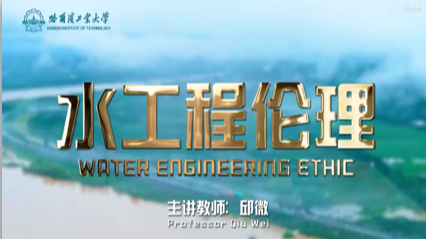
当前课程知识点:Compilation Principle > Chapter 4 Top-Down Parsing > 4.5 LL(1) Parsing (I) > 4.5 LL(1) Parsing (I)
返回《Compilation Principle》慕课在线视频课程列表
返回《Compilation Principle》慕课在线视频列表
-1.1 An Introduction to Compiler Principles
--1.1 An Introduction to Compiler Principles
--1.1 An Introduction to Compiler Principles
-1.2 The Structure of the Compiler
--1.2 The Structure of the Compiler
--1.2 The Structure of the Compiler
-1.3 The Construction and Composition of a Compiler (I)
--1.3 The Construction and Composition of a Compiler (I)
--1.3 The Construction and Composition of a Compiler (I)
-1.4 The Construction and Composition of a Compiler (II)
--1.4 The Construction and Composition of a Compiler (II)
--1.4 The Construction and Composition of a Compiler (II)
-1.5 Auxiliary Routines and Tools run by the Compiler
--1.5 Auxiliary Routines and Tools run by the Compiler
--1.5 Auxiliary Routines and Tools run by the Compiler
-1.6 Main Data Structures that the Compiler Runs(I)
--1.6 Main Data Structures that the Compiler Runs(I)
--1.6 Main Data Structures that the Compiler Runs(I)
-1.7 Main Data Structures that the Compiler Runs(II)
--1.7 Main Data Structures that the Compiler Runs(II)
--1.7 Main Data Structures that the Compiler Runs(II)
-1.8 Bootstrapping and Porting(I)
--1.8 Bootstrapping and Porting(I)
--1.8 Bootstrapping and Porting(I)
-1.9 Bootstrapping and Porting(II)
--1.9 Bootstrapping and Porting(II)
--1.9 Bootstrapping and Porting(II)
-Chapter 1 testing
-2.1 Scanning Process
-2.2 Regular Expressions (I)
-2.3 Regular Expressions (II)
--2.3 Regular Expressions (II)
--2.3 Regular Expressions (II)
-2.4 Regular Expressions (III)
--2.4 Regular Expressions (III)
--2.4 Regular Expressions (III)
-2.5 Finite Automata (I)
-2.6 Finite Automata (II)
-2.7 Nondeterministic finite automata (I)
--2.7 Nondeterministic finite automata (I)
--2.7 Nondeterministic finite automata (I)
-2.8 Nondeterministic Finite Automata (II)
--2.8 Nondeterministic Finite Automata (II)
--2.8 Nondeterministic Finite Automata (II)
-2.9 From Regular Expressions to DFA (I)
--2.9 From Regular Expressions to DFA (I)
--2.9 From Regular Expressions to DFA (I)
-2.10 From Regular Expressions to DFA (II)
--2.10 From Regular Expressions to DFA (II)
--2.10 From Regular Expressions to DFA (II)
-2.11 From Regular Expressions to DFA (III)
--2.11 From Regular Expressions to DFA (III)
--2.11 From Regular Expressions to DFA (III)
-2.12 From Regular Expressions to DFA (IV)
--2.12 From Regular Expressions to DFA (IV)
--2.12 From Regular Expressions to DFA (IV)
-Chapter 2 testing
-3.1 Context-Free Grammars and Parsing
--3.1 Context-Free Grammars and Parsing
--3.1 Context-Free Grammars and Parsing
-3.2 Derivation (I)
-3.3 Derivation (II)
-3.4 Parse Trees and Abstract Syntax Trees
--3.4 Parse Trees and Abstract Syntax Trees
--3.4 Parse Trees and Abstract Syntax Trees
-3.5 Ambiguous Grammars
-3.6 Extended Notation : EBNF and Syntax Diagrams
--3.6 Extended Notation : EBNF and Syntax Diagrams
--3.6 Extended Notation : EBNF and Syntax Diagrams
-3.7 Formal Properties of Context-Free Languages
--3.7 Formal Properties of Context-Free Languages
--3.7 Formal Properties of Context-Free Languages
-3.8 Context-Free Grammars for TINY
--3.8 Context-Free Grammars for TINY
--3.8 Context-Free Grammars for TINY
-Chapter 3 testing
-4.1 The Introduction of Top-Down Parsing
--4.1 The Introduction of Top-Down Parsing
--4.1 The Introduction of Top-Down Parsing
-4.2 Recursive-Descent Analysis (I)
--4.2 Recursive-Descent Analysis (I)
--4.2 Recursive-Descent Analysis (I)
-4.3 Recursive-Descent Analysis (II)
--4.3 Recursive-Descent Analysis (II)
--4.3 Recursive-Descent Analysis (II)
-4.4 Error-Recovery in Top-Down Analysis
--4.4 Error-Recovery in Top-Down Analysis
--4.4 Error-Recovery in Top-Down Analysis
-4.5 LL(1) Parsing (I)
-4.6 LL(1) Parsing (II)
-4.7 LL(1) Grammars
-4.8 First sets
-4.9 Follow sets (I)
-4.10 Follow Sets (II)
-4.11 LL(1) Parsing Tables
-4.12 The Problems in LL(1) Grammar
--4.12 The Problems in LL(1) Grammar
--4.12 The Problems in LL(1) Grammar
-4.13 Elimination of Left Recursion and Left Factoring
--4.13 Elimination of Left Recursion and Left Factoring
--4.13 Elimination of Left Recursion and Left Factoring
-chapter 4 testing
-5.1 Extraction of Attribute Grammars and Semantic Rules (I)
--5.1 Extraction of Attribute Grammars and Semantic Rules (I)
--5.1 Extraction of Attribute Grammars and Semantic Rules (I)
-5.2 Extraction of Attribute Grammar and Semantic Rules (II)
--5.2 Extraction of Attribute Grammar and Semantic Rules (II)
--5.2 Extraction of Attribute Grammar and Semantic Rules (II)
-5.3 Construction of Dependency Graphs
--5.3 Construction of Dependency Graphs
--5.3 Construction of Dependency Graphs
-5.4 Synthesized Attributes and Inherited Attributes
--5.4 Synthesized Attributes and Inherited Attributes
--5.4 Synthesized Attributes and Inherited Attributes
-chapter 5 testing
-6.1 Runtime Environment (I)
-6.2 Runtime Environment (II)
--6.2 Runtime Environment (II)
--6.2 Runtime Environment (II)
-6.3 The Realization of Stack Storage Allocation (I)
--6.3 The Realization of Stack Storage Allocation (I)
--6.3 The Realization of Stack Storage Allocation (I)
-6.4 The realization of Stack Storage Allocation (II)
--6.4 The realization of Stack Storage Allocation (II)
--6.4 The realization of Stack Storage Allocation (II)
-Chapter 6 testing
-7.1 Intermediate Code (I)
-7.2 Intermediate Code (II)
-7.3 Postfix Notation(I)
-7.4 Postfix Notation(II)
-7.5 Three-Address Code (I)
-7.6 Three-Address Code (II)
-7.7 P Code
-7.8 Code Generation Techniques
--7.8 Code Generation Techniques
--7.8 Code Generation Techniques
-Chapter 7 testing

